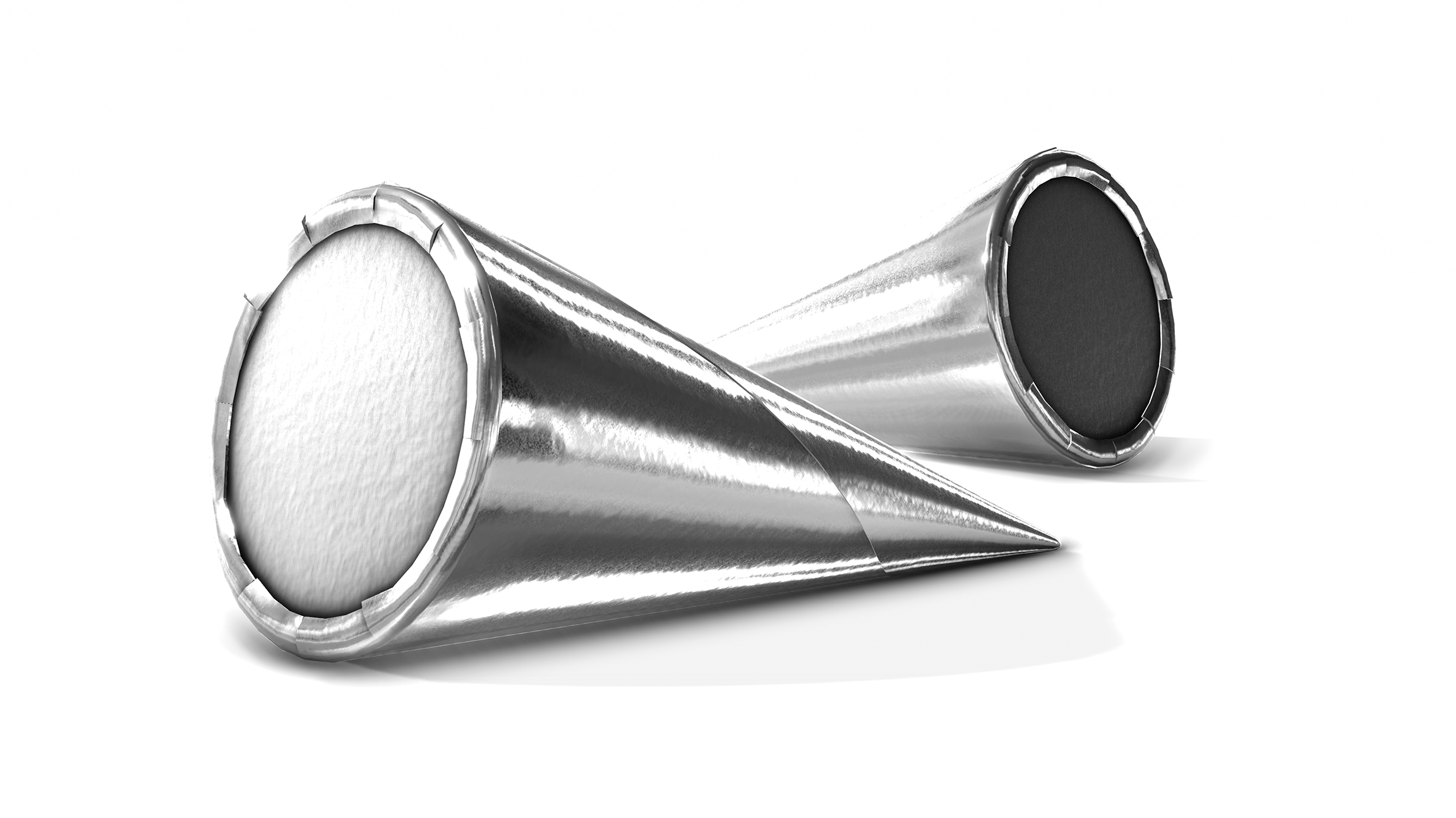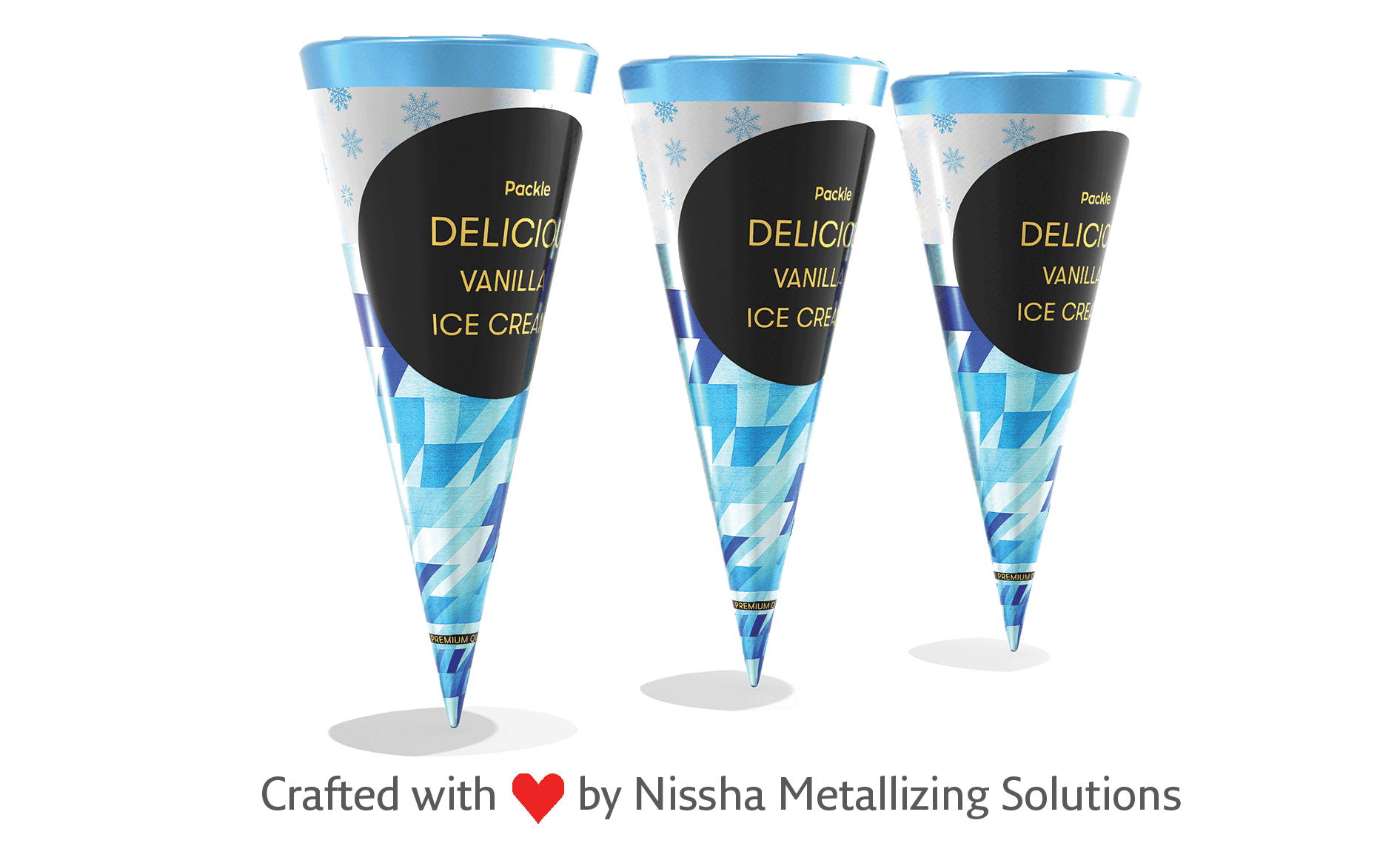Case study: metallized paper for ice cone wrappers
Nissha Metallizing Solutions is launching ice cream cone wrappers using our metallized paper. Here, Clémentine Boehrer explains some of the ways we have adapted our paper for this specific use as well as some of the ways that metallized paper is showing itself to have more capabilities for packaging applications than many brands might imagine.
Ice cream is an exciting market in several areas of the world, and trends vary from region to region. In Europe and South America, ice cream is something that’s typically brought from artisan producers and boutique firms. In America, innovative flavors are on-trend. In Asia, there’s a big market for individually wrapped ice cream products like cones or lollies, and the demand for the frozen treats is on the rise.
‘Whether they are looking to bring new products to market or rebrand, paper-based packaging for ice cream products is something brands are keen to explore more fully,’ says Clémentine Boehrer. ‘Using recyclable packaging wherever possible and moving away from multi-layers material, or simply alunium foil free material, is one of the drivers behind this, as is the visual appeal that the metallized finish can bring the packaging,’ she adds.
Typically, ice cream cone wrappers are made of multilayer material, generally paper laminated to aluminium foil that will provide barrier and gives a great fold memory to keep the cone nicely closed.
In the case of the ice cream cone metallized sleeve, we were looking to maximize the technical characteristics of our paper so that a paper solution can fulfil the high requirements of the supply chain, used to work with the unique properties of aluminium foil. This move to a recyclable paper solution could not afford to mitigate the look and the metallized look.
Particularly because of the demand for ice creams sold in single units, the design and color of each package are essential. The glossy and premium look finishes of our papers are therefore ideal and needed for packaging that is attractive and eye-catching to consumers.

Technical properties
‘For any application, there are a number of things to think about, which range from the very simple to the very complex. Increasingly, we are able to show that our papers can perform well in very strenuous converting environments and that they can have the technical properties to deliver optimum results in a number of different ways,’ explains Clémentine.
In the case of ice cream cones, the main challenges were related to the cone sleeve shaping and the closure once filled with ice cone.
After printing in rotogravure mainly, the metallized paper, the printed paper will be cut and then shaping in a cone and glued. This process is performed as a very high speed and needs a perfect flatness of the paper. This was one challenge that we proudly overpassed by setting carefully together with the papermaker the key characteristics that this application needs. The gluing of the sleeve was also an additional parameter to take into accounts to ensure a good compatibility with most of the existing glue used by our partners.

Filling the cones
The last converting step is to insert the waffle in the metallized sleeve, add the ice cream and then crimp the package shut. ‘In this case, we were able to present a viable solution for closing the ice cream packaging via crimping, by be more closely tailored for the conditions needed to achieve this with metallized paper,’ adds Clémentine. “It might be surprising while having the metallized paper in hands that can never be as stiff as aluminum foil material but we experienced the fact that it works smoothly on filling lines”.
Going forward, Nissha Metallizing Solutions is finalizing and improving mechanics, fine-tuning our design and choice of base paper to ensure that our paper is optimized for ice cream cone wrap-around labels. ‘We enjoy being able to answer questions about our papers and explore the technical requirements of our products in order that they meet up to the requirements of end users and their partners in the supply chain,’ says Clémentine in conclusion.

Clémentine Boehrer
Business Development Manager at Nissha Metallizing Solutions.
She graduated as a Paper Science and Engineering Ingénieur (Engineer), having studied in France and Finland.